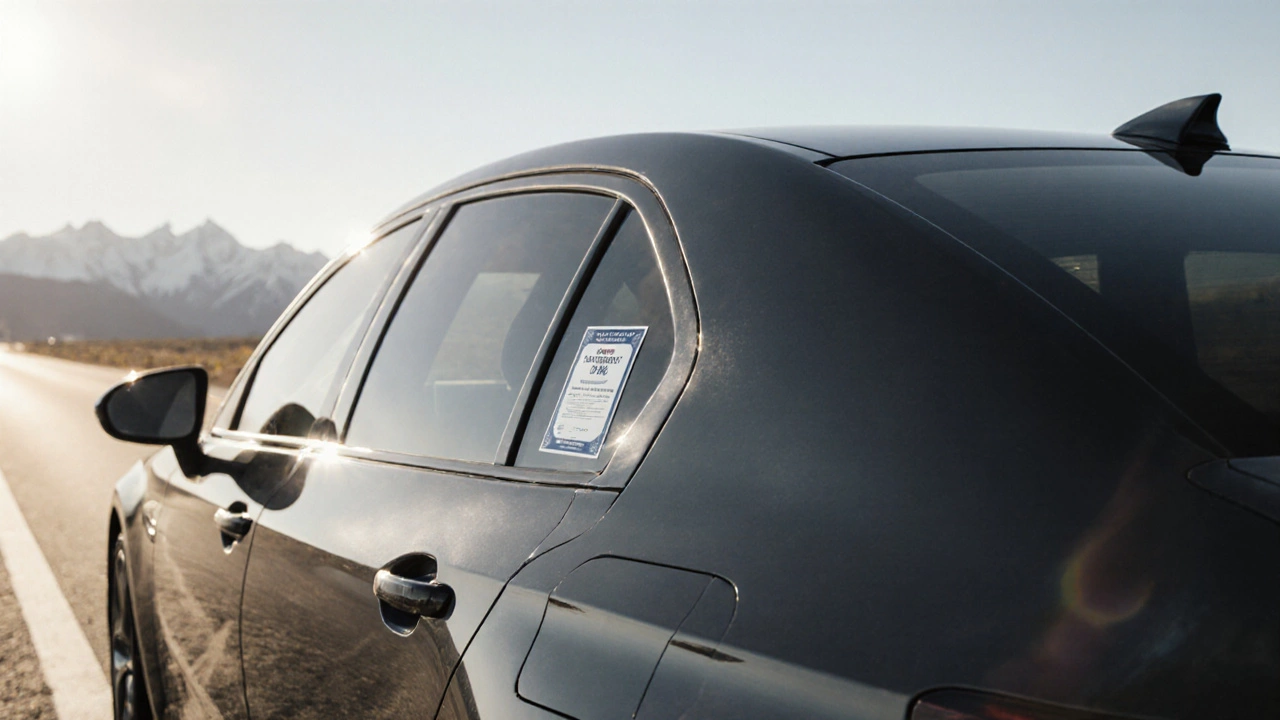5% Window Tint Legality in Colorado - What You Need to Know
- Gareth Westbrook
- 9 10 2025 Window Tinting
Find out if a 5% window tint is legal in Colorado, learn the VLT limits for each glass area, understand penalties, and get a compliance checklist.
When talking about 5% tint legality, the legal status of using a 5 percent visible light transmission (VLT) film on vehicle windows in the UK, also known as 5% VLT, it’s easy to get confused by different rules for front and rear windows. In plain terms, a 5% VLT means the film lets only five parts of every hundred of visible light through, which makes the glass look almost black. This level of darkness is far below the limit most drivers are allowed to use, and it directly triggers the legal limits set by road safety authorities.
The broader concept here is window tint, any film or coating applied to vehicle glass to reduce glare, heat and UV exposure, sometimes called vehicle tint. Window tint comes in many VLT ratings, from 70% (light) to 0% (completely opaque). The rating you choose dictates how much sunlight reaches the interior and how visible you are to other drivers. While a darker film can improve privacy and keep the cabin cooler, it also cuts down on driver sight lines, which is why the law draws a line at a certain percentage for each window position. Understanding the spectrum of tint options helps you see why a 5% film sits at the extreme end.
Legal limits are defined by road safety regulations, the set of rules that govern vehicle equipment to ensure safe driving conditions, often referenced as the Vehicle Certification Agency (VCA) standards. These regulations assign a minimum VLT for the front windscreen, front side windows, and rear side windows. For example, the front windscreen must allow at least 75% of light in, and front side windows need a minimum of 70% VLT. Rear windows can be darker, but even they must stay above 20% VLT. The purpose of these rules is to maintain adequate visibility for the driver and for other road users, reducing the risk of accidents caused by reduced sight.
Enforcement falls to police enforcement, the process by which law‑enforcement officers check vehicle compliance with tint regulations, sometimes called traffic policing. Officers use handheld tint meters to measure VLT on the spot. If a vehicle exceeds the legal limit, the driver can receive a fixed‑penalty notice, a fine, and may be required to remove the illegal film. In some cases, the vehicle can be taken to a qualified installer for correction. Knowing how the police conduct checks helps you avoid surprise penalties and understand what evidence they rely on.
Beyond legality, a dark tint influences comfort and privacy. A 5% film blocks nearly all UV rays, dramatically lowering interior temperatures and protecting upholstery from sun damage. However, this benefit comes at the cost of reduced peripheral vision, especially at night or in low‑light conditions. Some drivers also face higher insurance premiums because insurers view excessive tint as a risk factor. Weighing these pros and cons is essential before deciding on any shade that approaches the legal threshold.
First, check the VLT rating that matches the law for each window – front, side and rear – and compare it against the look you want. Second, consider the material: ceramic films offer heat rejection without affecting radio signals, while dyed films are cheaper but may fade. Third, think about the installer’s certification; a reputable shop will provide a compliance certificate that proves the tint meets legal standards. Finally, factor in your driving environment – frequent night driving or rural roads demand higher visibility, making a lighter tint a safer choice.
Armed with this overview, you’ll be able to spot the right balance between style, comfort and the law. Below, you’ll find a collection of articles that dive deeper into the specifics of tint percentages, how police checks work, the impact on safety and insurance, and practical tips for staying within the legal limits while still getting the look you want.

Find out if a 5% window tint is legal in Colorado, learn the VLT limits for each glass area, understand penalties, and get a compliance checklist.